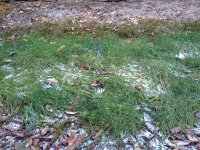arizona98tj
Gold Member
plowhog,
Do you maintain a compost bin? We have one and our neighbor lady even brings her material over to help out. Working that into your raised beds in the late summer (after harvest) or the fall would be the best time to add it. Adding it in the spring works as your second best time.
We put material such as the following in ours:
Do you maintain a compost bin? We have one and our neighbor lady even brings her material over to help out. Working that into your raised beds in the late summer (after harvest) or the fall would be the best time to add it. Adding it in the spring works as your second best time.
We put material such as the following in ours:
- Grass clippings.
- Tree leaves.
- Vegetable food scraps (coffee grounds, lettuce, potato peels, banana peels, avocado skins, etc.)
- Black and white newspaper.
- Printer paper.
- Most disease-free yard waste.
- Cardboard.
- Egg shells.
- Vegetarian animal manure (e.g. cows, horses, rabbits, hamsters, etc.)
